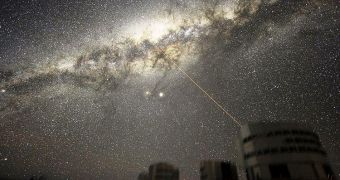According to investigators, it could be that our galaxy is filled with black holes that wander about, consuming whatever comes in their path. Such objects may also be consuming extrasolar planets, of which billions may exist throughout the spans of the Milky Way.
One of the most important things to keep in mind about the galaxy is that it is about 120,000 light-years wide, meaning that it contains vast numbers of stars. Conceivably, most stars formed exoplanets around themselves when they first appeared, so there is no shortage of exoplanets in the galaxy.
The issue here is determining where these planets are located. Many of them are ejected from the star systems where they form due to gravitational interactions with other objects around the same star.
This may have very well been the case with our own solar system, where experts recently proposed the existence of two other giant planets early on. The Jupiter-sized objects may have been ejected from around the Sun when the entire system was in its infancy.
By now, these runaway planets may have already been consumed by dark behemoths lurking about. “Rogue black holes like this would be very difficult to spot,” explains Kelly Holley-Bockelmann, an astronomer at the Vanderbilt University, quoted by Daily Galaxy.
“Unless it's swallowing a lot of gas, about the only way to detect the approach of such a black hole would be to observe the way in which its super-strength gravitational field bends the light that passes nearby,” the scientist adds.
“This produces an effect called gravitational lensing that would make background stars appear to shift and brighten momentarily.” Holley-Bockelmann says. The conclusion that numerous black holes may exist in the galaxy came from a recent simulation of dark behemoth merger rates.
One of the main mechanisms through which these objects are sent out in the galaxy occurs in binary systems, when two black holes collide. The resulting object, or whatever is left of the smaller one, can be kicked out of the system at speeds exceeding 4,000 kilometers (2,485 miles) per second.
“This is much higher than anyone predicted. Even the average kick velocity of 200 kilometers per second is extremely high when compared to the escape velocities of typical astronomical objects,” Holley-Bockelmann explains.
“We realized that basically any black hole merger would kick the new remnant out of a globular cluster, because the escape velocity is less than 100 kilometers per second,” the investigator goes on to say.

 14 DAY TRIAL //
14 DAY TRIAL //